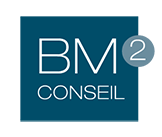Content
The third group, the control group, was not asked to speak with the confederate. In this type of situation, people can change their https://ecosoberhouse.com/ beliefs, their attitudes, or their behaviors. He has signed on to the military for four years, and he cannot legally leave.
What are 7 signs of cognitive dissonance?
- discomfort before making a decision.
- feelings of guilt over past decisions.
- shame or embarrassment regarding a decision and hiding said decisions from others as a result.
- justification or rationalization of behavior.
- doing something out of social pressure, not true interest.
In some cases the signal accurately cued the taste solution being presented, but in other cases the cue was misleading, e.g. a signal for a bitter solution was given, but a sweet solution was presented. Their results showed that sweet solutions that disconfirmed a taste expectation cognitive dissonance treatment were rated less intense than sweet solutions that confirmed a taste expectancy. However, bitter solutions that disconfirmed an expectation were rated more intense. In both cases, disconfirmed expectations resulted in a more negative experience (less sweet or more bitter).
Examples of cognitive dissonance
Because the task wasn’t validated by a sufficient monetary reward, they made up an internal motivation that justified the lie. Festinger proposed this hypothesis in his 1957 book, A Theory of Cognitive Dissonance. His research on what causes cognitive dissonance and how we react to it has become critical to the fields of social psychology and psychiatry.

More than that, you will have to replace old, limiting beliefs with new, positive ones. This can be a hard process for many people because they encounter a lot of cognitive dissonance. When you spend your whole life telling yourself that you’re no good, you’re going to feel mighty uncomfortable using affirmations to tell yourself that you’re worthy of achievements or that you can reach your goals. The expectation of shared beliefs, values, and attitudes from family members can additionally influence romantic relationships. If these don’t align, we might consider justifying our relationship or breaking up.
Consumer behavior
Research using a hypocrisy paradigm has shown that persons change their behavior to be more in line with their beliefs when they are reminded of times when they did not live up to their beliefs. It is difficult to reconcile any of these lines of dissonance research with a conception of dissonance theory in which the production of an aversive consequence is the only motivator of dissonance-related attitude change. The cognitive dissonance theory says that people seek psychological consistency between their beliefs and the real world. In order to function properly, people constantly reduce their cognitive dissonance to align their cognitions with their actions. In this theory, he states that cognitive dissonance is a state of non-equilibrium where the behaviors and attitudes are inconsistent with one another.

When your thoughts and actions conflict with one another, you will either reject, explain away or avoid the situation to make sure that your body and mind remain aligned. To explore more about psychological theories and how the mind works, read up on operant conditioning. To fix the cognitive dissonance in a positive way, the worker will need to change the behavior to align with policy. He would tell his boss that creating the hack is not possible because it is against policy.
The difference between cognitive dissonance and forced compliance
He suggested that people have an inner need to ensure that their beliefs and behaviors are consistent. Inconsistent or conflicting beliefs lead to disharmony, which people strive to avoid. Cognitive dissonance is the mental discomfort that results from holding two conflicting beliefs, values, or attitudes. People tend to seek consistency in their attitudes and perceptions, so this conflict causes unpleasant feelings of unease or discomfort.
What is an example of cognitive dissonance in everyday life?
- Regular exercise. We promote the importance of regular exercise.
- Smoking and alcohol consumption.
- Productivity at work.
- Impulse buying.
- Being honest.
- Eating meat.
- Peer pressure.
Such a result was observed because the group of people who were paid $1 had no valid justification to claim that the task was interesting. Hence they chose to alter their attitude toward the task to bring them back to a state of equilibrium and not feel that they were making a false claim. Researchers later came to call this phenomenon a “less-leads-to-more effect”. In this situation, she can either choose to follow her morals and find an alternative that would align with her beliefs. Cognitive dissonance is the state of mind that occurs when you are simultaneously entertaining two or more opposite ideas. This situation is stressful for your brain, so it wants to quickly pick an option to resolve the conflict.

Laissez un commentaire